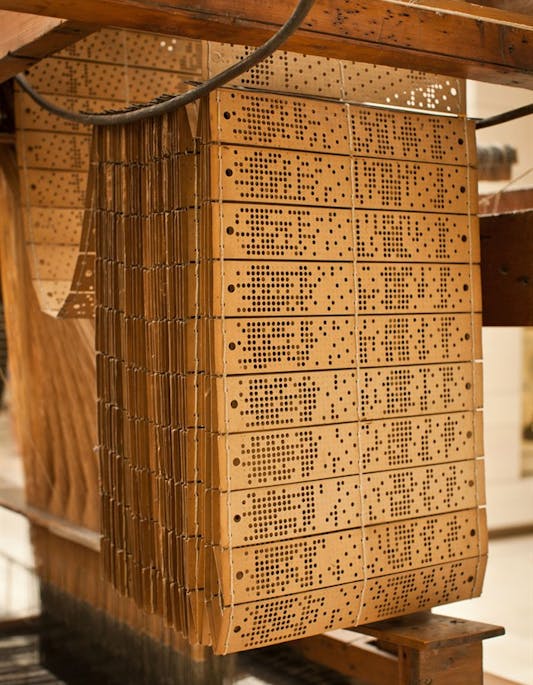- For a high quality version to print, view the piece Live, maximize the window and zoom out the browser setting as far as possible. Refresh, and right click to save the high resolution file.
Lisa Orth's A Stitch Is Fine project reminds me of the genesis of computation which most people don't know about: the textile industry.
I recall my first year as President of RISD when I ran an evening seminar series for students and faculty to learn about computation. At the kickoff gathering, I showed a punchcard — which is a thin piece of paper on which different digits are literally "punched-out" so that light could shine through and be read as digital information. I asked the seminar participants if they'd ever seen a punch card expecting nobody to raise their hand. I was expecting maybe older Computer Science professors from nearby Brown University to raise their hands, if at all. But a cadre of 19 students raised their hands... who... looked like they were 19. I asked what their major was and they unanimously said, "Textiles!" Of course! We had a Jacquard loom in that department that used "jacquard cards" – which is how patterns get set for the textile production systems to create their magic.

Jacquard cards with holes that correspond to the intended woven pattern of textile. Courtesy National Museums Scotland
When considering what Orth has produced in this work, she's taken advantage of the interference patterns that emerge when you overlay different loops of numbers. Different from a physical Jacquard loom, it's possible to layer these at any angle — and in that process you're able to find interesting moments where the eye gets caught in a "Venus flytrap" of sorts within the field of view. A similar thing happens when you're looking at a real textile up close because there's so much detail to enjoy – especially when you have a 10x magnifying loupe with which to enjoy a piece at a higher magnification level.
Because the digital world is infinitely zoomable, we don't appreciate these moments of "pattern interference" so much anymore. For that reason I like to wear a tightly woven checkered pattern on my Zoom calls sometimes, just to Moiré the camera's view to make such patterns visible for folks out there. Orth does it in a much more civilized way than me with her mint collection here.